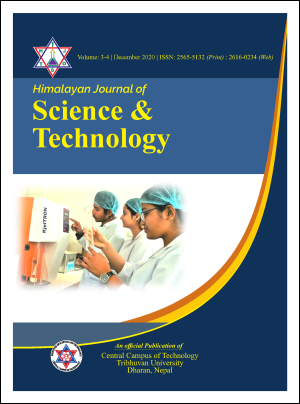Microbiological Quality and Antibiogram Assessment of Bacterial Pathogens Isolated from Raw Salad Vegetable Samples of Kathmandu Valley
DOI:
https://doi.org/10.3126/hijost.v4i0.33911Keywords:
Salad, International Standards, Microbiological QualityAbstract
Most typical salad vegetables include carrots, cabbages, lettuces, bell peppers, cucumber, onions, tomatoes, coriander and radishes. The aim of this research was to study the microbiological quality of salad vegetables and perform antibiotic susceptibility of isolates. In this study, total viable count, total coliform count and yeast, mold count were calculated as CFU/ml within sample type and according to various sample sources. Total percentage of isolated bacteria and molds were calculated. Antibiotic sensitivity test of isolated bacteria was carried out by Kirby-Bauer disc diffusion method according to CLSI 2017 guideline. Average microbial count was ≤ 107 CFU/ml for all sample types. So, it revealed that the vast majority of samples failed to comply with international standards i.e. ≤104 CFU/ml. Total 172 isolates from raw salad vegetable Escherichia coli 14 (70%), K. pneumoniae 12 (60%) and P. aeruginosa 15 (75%) were found to be predominant. Whereas, Trichoderma spp 4 (20%) were most predominant amongst mold. Highest resistivity was against Amoxicillin/ Clavulanic acid and most sensitivity was against Gentamicin followed by Ciprofloxacin and Chloramphenicol. This study showed that raw salad vegetable samples were heavily contaminated and the antimicrobial resistance pattern shown by the isolates is an indication that adequate measure need be taken to regulate drug use in both humans and animals in order to minimize the risk of increasing antimicrobial resistance.
Downloads
Downloads
Published
How to Cite
Issue
Section
License
© Himalayan Journal of Science and Technology
All rights reserved.




